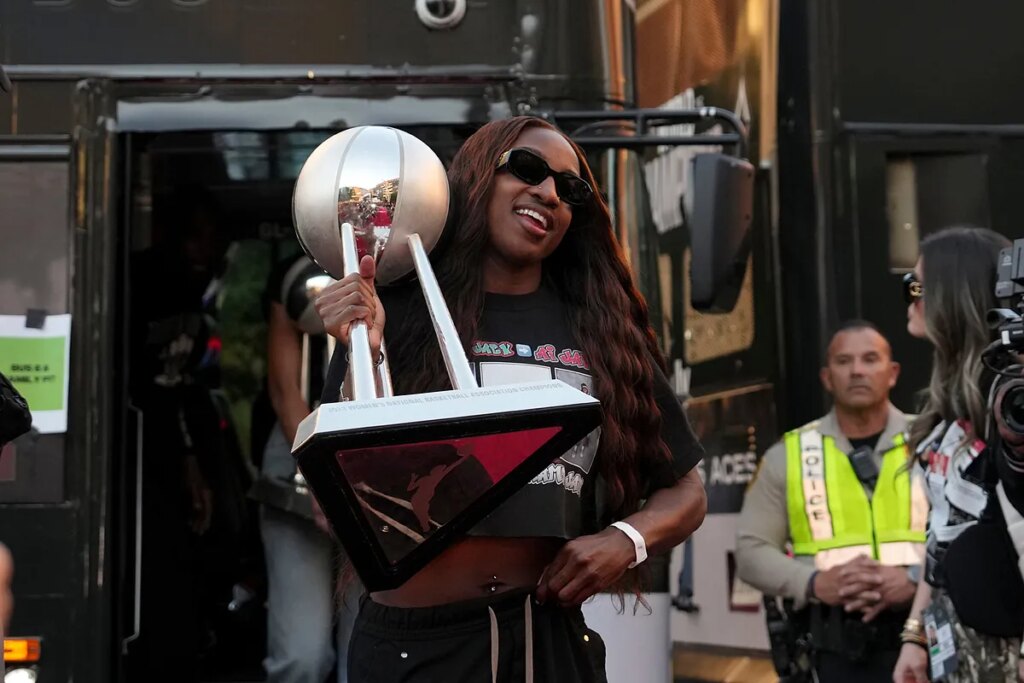As the 2025 WNBA season progressed, players voiced two major concerns questionable officiating and, more significantly, stalled negotiations over a new collective bargaining agreement (CBA).
The heart of the current dispute lies in two different visions for the league’s future. The WNBA’s leadership has put forward a proposal that includes significant salary increases.
Meanwhile, the WNBPA continues to advocate for a system based on shared revenue, mirroring what exists in the NBA. Now, Adam Silver has entered the conversation, drawing attention with his comments and adding tension to an already delicate situation.
Speaking before the NBA season tipped off, Silver highlighted why he believes increasing player pay is a better approach than revenue sharing. He stated, “I think share isn’t the right way to look at it because there’s so much more revenue in the NBA. They [WNBA players] are gonna get a big increase in this cycle of collective bargaining, and they deserve it.”
Revenue shortfalls complicate a shared model
While Silver‘s remarks may seem unsympathetic, the financial data offers some explanation.
The NBA generated $11.3 billion in revenue in 2024. In contrast, despite a record-setting year, the WNBA ended the season with a reported $40 million loss, a significant increase from a $10 million deficit in 2018.
Given those figures, a revenue-sharing agreement is hard to justify when there’s little profit to go around. Although the league has secured a $2.2 billion media rights deal and is adding two new expansion teams, those gains may take time to yield consistent financial returns.
Further complicating matters is the league’s ownership structure. The WNBA is 42% owned by the NBA, 42% by the league itself, and 16% by private investors, making any revenue-sharing plan far more complex to execute.
With the current CBA set to expire on October 31, time is running out. A temporary extension, like the one reached before the 2020 agreement, is still possible. But if talks fail, the league could face its first-ever lockout, just as interest and growth in women’s basketball are gaining momentum.
Such a disruption could delay the 2026 season and put at risk the progress the WNBA has made, potentially halting its rise at a pivotal moment.
Read the full article here

